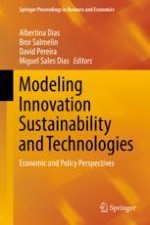This book gathers a diverse range of novel research on modeling innovation policies for sustainable economic development, based on a selection of papers from a conference on modeling innovation systems and technologies (MIST). It aims at encouraging interdisciplinary and comparative approaches, bringing together researchers and professionals interested in sustainable economic, technological development and open innovation, as well as their dissemination and practical application.
The respective contributions explore a variety of topics and cases, including regional innovation policy, the effects of open innovation on firms, innovation and sustainability in tourism, and the use of information and communication technologies. All chapters share a strong focus on new research and innovation methodologies, in keeping with the Experimentation and Application Research (EAR) and Open Innovation 2.0 principles.
